Icy Inverts Cruise 2013 - Shipboard Blog - Jan 18th to Jan 21st
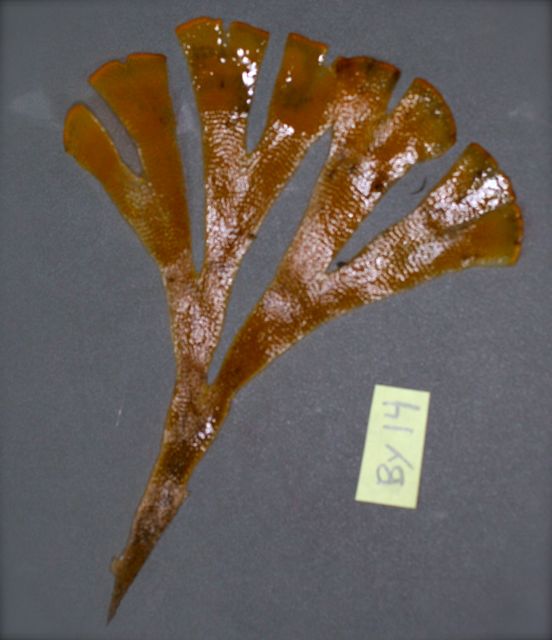
21 Jan 2013: In the Amundsen Sea (71° 03.1’S, 108° 15.5’W)
Dichotomous Branches
As our ship, the R/V Nathanial B. Palmer, cuts a meandering path through the sea ice along Antarctica's shelf, we stop in clear sites to trawl and collect a vast diversity of animals from the sea floor. If you are reading this blog, then I am sure you have already been introduced to the beautiful and sometimes strange forms of brittle stars, sea cucumbers, and arthropods that frequent our species sorting tables (and also our dreams). Through most of my career as an evolutionary biologist, I have had an affinity for colonial invertebrate animals that build modular bodies composed of smaller, repeated functional units (or zooids), some of which are used for feeding and others for reproduction and defense. Coloniality as a trait has evolved several times, as it is present in several evolutionarily distant taxa such as cnidarians, bryozoans, kamptozoans, pterobranchs, and tunicates. Although the anatomies of the individual zooids among these animal groups vary greatly, there are often distinct similarities in the overall growth forms of the colonies. Many of these colonies can be flat sheets covering a rock that grow through asexual budding or rows of zooids all budded from a common tubular structure (stolon). In these benthic (bottom) habitats space for growth can be limited by lack of appropriate hard substrate or competition with other animals. Common selective pressures such as these often result in colonial animals that can grow vertically producing erect branching forms consisting of single or multiple zooid rows (as the case with the endemic Antarctic bryozoan Camptolites). In many cases these branching forms are shaped similarly to some types of macroalgae (e.g. the bryozoan, Nematoflustra, above picture), mosses, and ferns, which is why, bryozoans were first mistaken to be plants rather than animals (hence the name 'moss' animals).
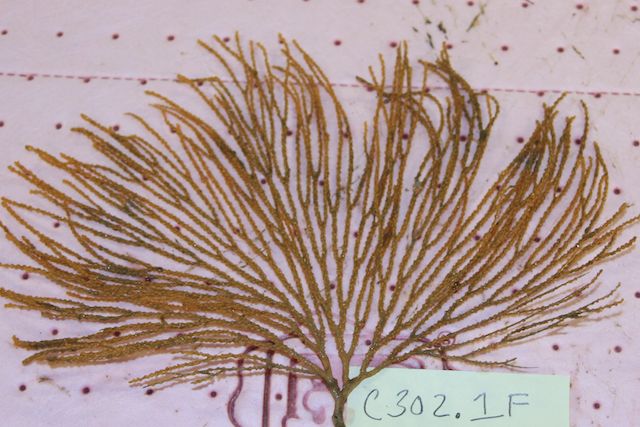
Cnidarian octocorals (above picture) are another of the more interesting colonial animals commonly found on the shelf habitats of Antarctica and are so named for the eight pinnate tentacles on each of their feeding zooids. Like the other animal groups I have mentioned, octocoral colonies come in a variety of shapes and growth forms, but I tend to like the simpler, dichotomously branching colonies such as those of Fannyella. Perhaps one reason for my bias comes from spending so much time investigating the evolutionary relationships among animals producing dichotomously branching phylogenetic tree diagrams (or cladograms) that depict a related group of species diverging over time from a common ancestor (below picture). Even most taxonomic keys used for roughly identifying specimens to species are based largely on a series of trait-based choices, usually two of more per category. And so more broadly, dichotomous keys and phylogenetic trees can be compared to a series of choices down a path from a single point, and it is these choices that define us. This context is one of the reasons I have the following quote (albeit modified here) from Charles Dickens’ book, Great Expectations, posted on my office door at Long Island University. “Pause you who read this, and think for a moment of the long chain of iron or gold, of thorns or flowers, that would never have bound you, but for the formation of the first link (zooid) on one memorable day.”
Contributed by: Dr. Scott Santagata, Assistant Professor of Biology, Long Island University-Post
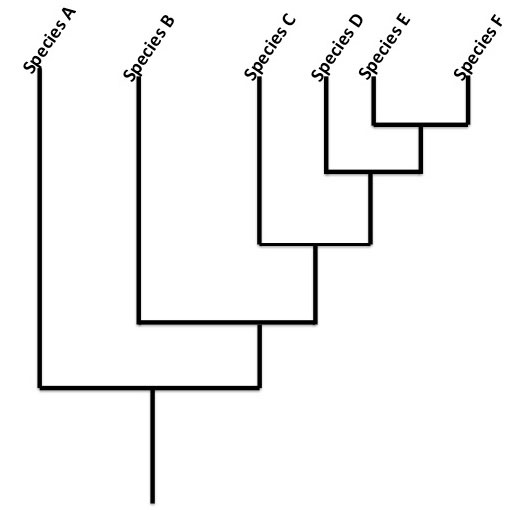
***************************************************************************************
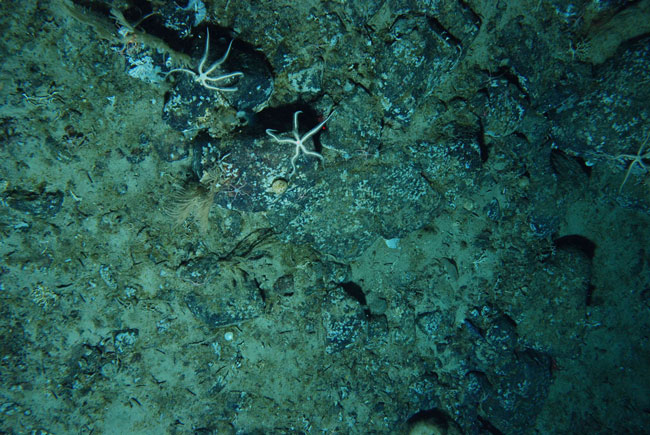
20 Jan 2013: In the Amundsen Sea (70° 45.7`S, 104° 59.7`W)
It has been a busy few days. We have sampled at several locations in the northeastern Amundsen Sea. Due to nearly year round ice cover, this sea is the least explored, with the first biological expedition occurring in 2008. I was fortunate enough to be a part of that expedition, and it is great being back five years later. During that 2008 expedition on the
RSS James Clarke Ross I was impressed with the number and diversity of the brittle stars that came up in every sample. As sample size can be so important when exploring various scientific ideas, I decided then that the brittle stars would be an interesting group to study. There are 217 brittle star species recorded in the Southern Ocean, 127 of them are found nowhere else. On the continental shelf - the shallower water around Antarctica - there are 79 species.
One interesting aspect of sampling the sea floor is the patchy distribution of animals (above picture). For example, at one site our catch was dominated by the brittlestar species Ophioperla koelheri and Ophiura caranifera. Our next site, only a few miles away, had no Ophioperla or Ophiura, but was dominated by Ophionotus victoriae. Our last sample as we were leaving the Amundsen Sea was almost entirely brittle stars (below picture), but this time the giant red spikey Ophiocamax gigas. What ecological factors dictate this patchiness is not fully understood as it is so difficult to appreciate the various characteristics of the seafloor at any one location. Whether the sediment is soft or coarse is certainly one factor.
The variety of animals found in a specific location on the Antarctic continental shelf, called an assemblage, is largely dictated by the frequency and time since the last iceberg scour. The giant icebergs around us - some several tens of miles across - can be as deep as 500 meters and scrape across the seafloor demolishing everything in its path. Over the last 10,000 years every bit of the shallow seafloor has been scraped many times. The effect of this over a large area is a mosaic of patches where communities of animals have been established over different time periods - since the last iceberg scour. In the very few places that are protected from icebergs, large long-living animals, such as giant sponges, can live, providing a complex and stable three-dimensional habitat, typically rich in diversity.
We are now crashing through the ice on our way out of the Amundsen Sea, perhaps to sample on the shelf break, where the "shallow" continental shelf (500 - 1000m deep) drop suddenly into the very deep oceanic or abyssal plains.
Contributed by: Dr. Chester Sands, Molecular Ecologist, British Antarctic Survey
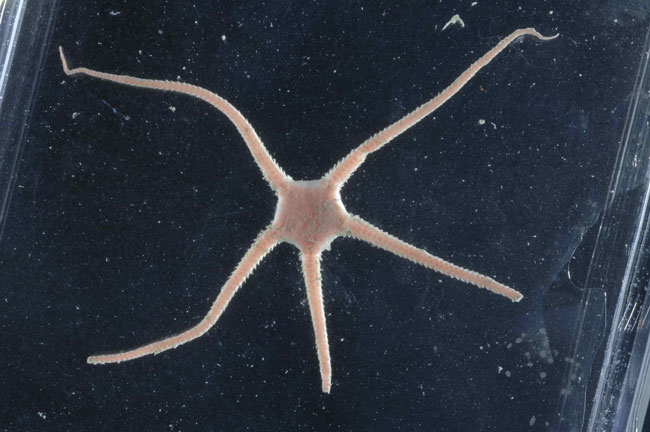
***************************************************************************************
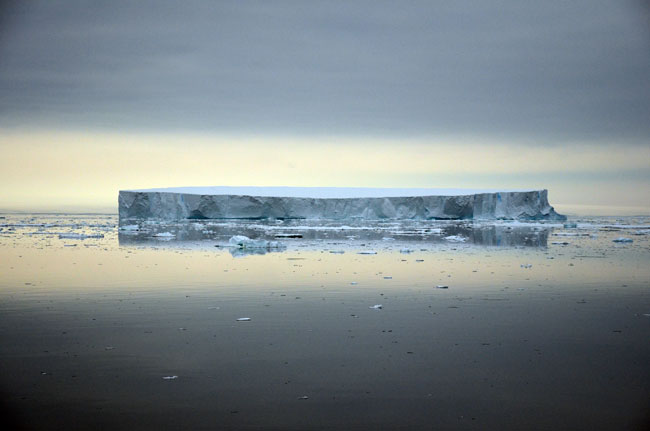
19 Jan 2013: In the Amundsen Sea (73° 40.9`S, 103° 35.1`W)
This is my first trip down to the Southern Ocean and I am truly thankful to be a part of this expedition and researching species that inhabit these waters. This place is like nothing I have ever experienced before. To say that the scenery is beautiful down here (above picture), really doesn’t do it justice. The many icebergs, tall mountains, and islands are truly a sight to behold. While the majority of the biodiversity lies under the water, we have also been able to enjoy spending time watching several species of whales, seals, and penguins from the bow of the R/V Palmer. What I find to be the most striking thing about this trip is the amount of biodiversity that we have collected in each trawl. Every time a new trawl comes on deck, it is an incredibly exciting experience because it could contain anything from the species that you want to work on, to multiple species that are completely new to science. I was aware of the amazing amount of cryptic speciation that occurs in the Southern Ocean, but it has become more apparent to me just from one sampling location to another. We have pulled up organisms at differing locations that at first glance appear to be of the same species but have had distinctively differing morphologies. Studies have pointed to our current knowledge of species richness in the Southern Ocean to be underestimated, and with the trawls we have performed thus far, I would be inclined to agree.
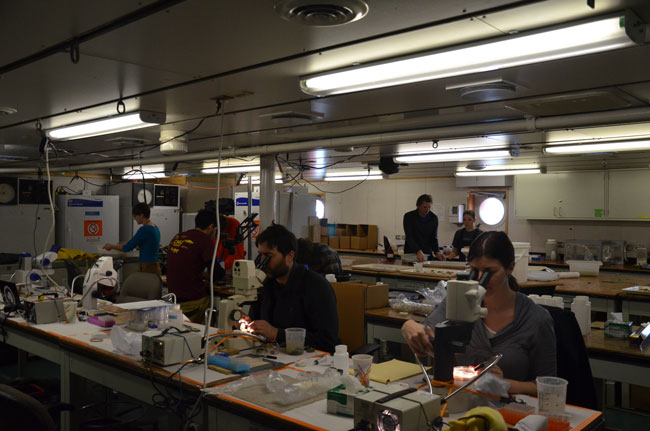
With our research in full swing (above picture), the two different shifts have become one working entity and a definite rhythm has been established. The sorting table alone has become a spectacle to watch but what is more impressive is the efficiency in which species are identified, catalogued and preserved in the lab. We have been working in two twelve hour shifts and I use that term “working” loosely because each shift has been an excellent but entertaining learning experience. One of the greatest opportunities of this trip is working alongside and learning from experts in the varying taxonomic fields. One such taxonomic group that seems to be in high abundance with every trawl are brittle stars and I am very appreciative that Cheps Sands has been spending time to educate me and the others on identifying the differing species. The people I work with are great, the invertebrates are incredibly interesting (like this crab in the below picture), the scenery is beautiful and I am really thankful to be apart of this expedition. To the classes that are following us, I highly encourage every student to consider pursuing a career in science and see some of the truly amazing things this world has to reveal.
Contributed by: Matthew Galaska, Ph.D. Candidate, Auburn University
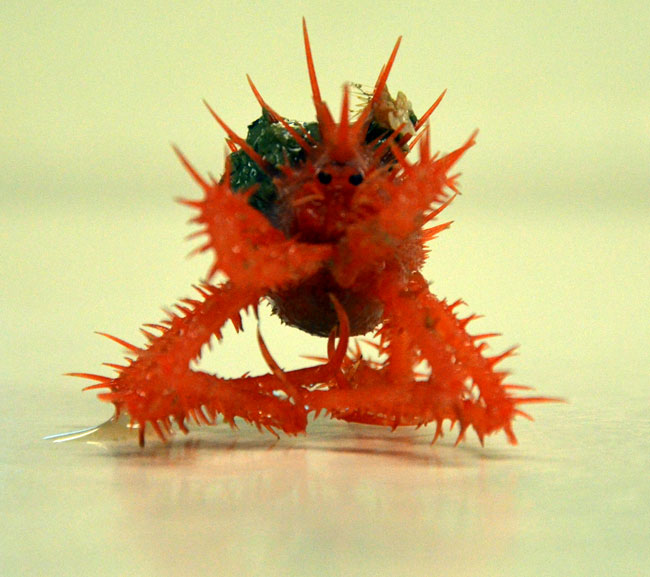
***************************************************************************************
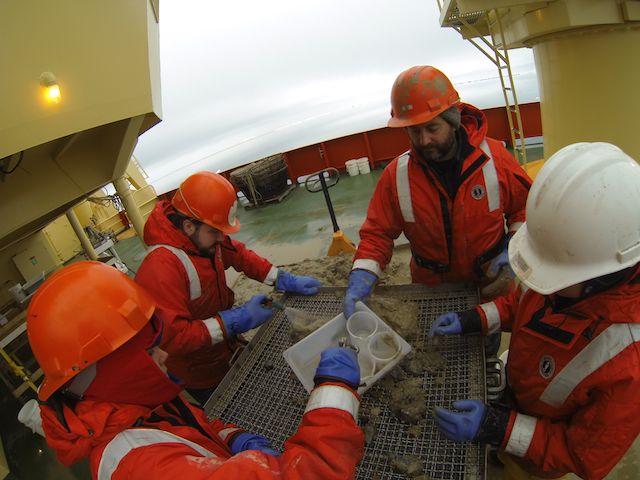
18 Jan 2013: In the Amundsen Sea (72o 46.4`S, 104o 35.1`W)
A phrase commonly used by my family in efforts to clear the table after dinner is: “If everyone carries a toothpick, no one has to carry a log”. Call it whatever you want, I think it is an absolutely fantastic catch phrase and has been the symphony of this research cruise. This team-playing atmosphere is not limited to us science folk in the lab while we are transporting organisms in from the outside sorting table (above picture) to be further processed in the lab. It is actually a boat-wide effort. For example, to make one Blake trawl “go”, you have the IT people taking ship data and providing ice maps, the Captain (obviously) steering the ship with the Mate’s assistance, the Able Bodied Sea Men operating the winch and other heavy machinery, Marine Technicians deploying any science sampling machinery, the Marine Engineers and Oilers maintaining the engines, the Chef making sure everyone is well nourished, and us science folk getting excited about 200 brittle stars. After first observing this couple hour process the epiphany hit me: everyone not only has a job and purpose on this ship, but it is critical that they perform as best they can.
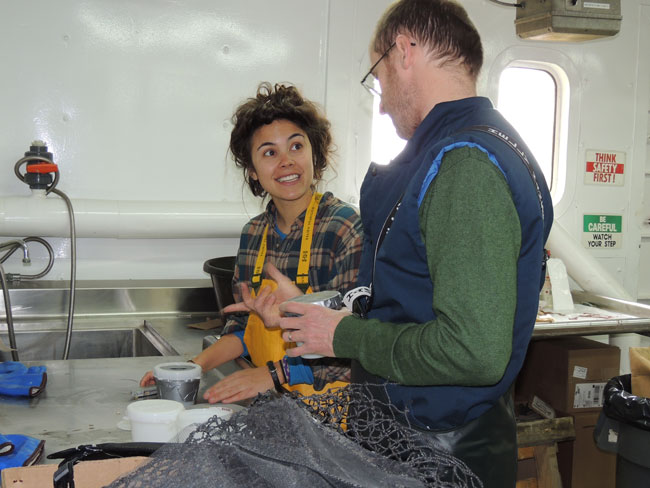
Therefore, I also have my own weight to pull here as an undergraduate research student, what it looks like exactly is quite versatile. To do it justice, I will just give a couple examples of the various tasks I have been assigned with. Before our first station, I helped Christoph construct the bait bags (above picture) we placed in crab pots to deploy on a line for 24 hours with the objective of collecting amphipods and isopods of all different flavors. After our first trawl, Ashley and I helped the Marine Technicians clean the stern of mud and clay remnants; method used: fire hose. That’s another check off the Ole Bucket List. I placed 20 pelagic sea cucumbers in whirl packs to be frozen in the minus 80 degrees Fahrenheit freezer. Today, with time in between trawls, we have begun data entry into the computer and the samples previously preserved in formaldehyde were replaced with denatured ethanol, which I diluted. To put it simply, I am radically available to any demand at the time and the phrase “hands on experience” has been taken to a whole new level. Each day looks different and in a race against time, work is always done in the most efficient manner, maintaining what we previously accomplished and preparing for what is ahead.
With all that being said, I now un-shamelessly retire to my bed at 7:30 pm to be ready and sharp for my 4 am shift. Shout-out to the students at Our Lady of Lourdes in Richmound, VA!! Hope you all like the seal in the below picture!!
Contributed by: Alex Medved, Undergraduate Research Student, Auburn University
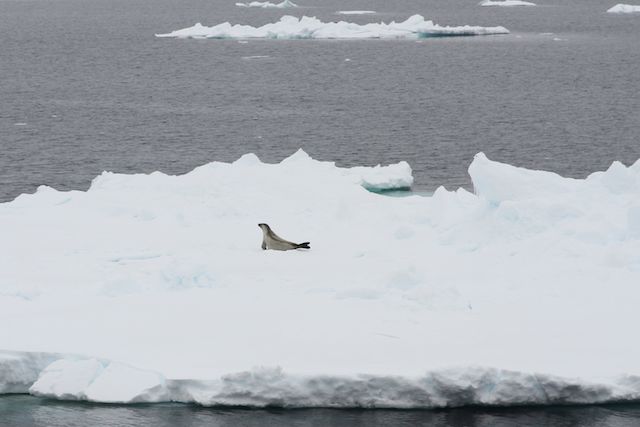
Last updated: 11/12/2013
